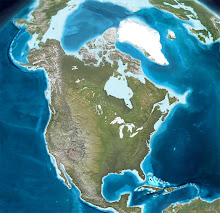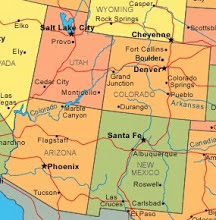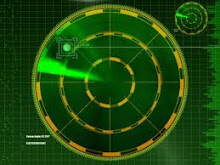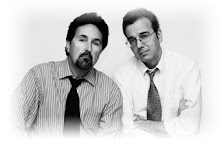By Steve Hammons
People who have sightings of unidentified flying objects (UFOs) sometimes report discs or saucers, V-shaped craft, triangles, glowing orbs and many other kinds of unusual things in the skies.
Sometimes the objects are said to appear metallic and other times an anomalous energy or light is reported.
One of the more unusual kinds of descriptions includes witness reports of something that appears like a “jellyfish.”
In recent days, this description has been used, and there have been other incidents when witnesses said a UFO looked like a "jellyfish," "octopus" or appearing to be something with "tentacles."
What are UFOs and why would they have such diverse appearance? Are they different kinds of technology or different kinds of phenomena altogether?
And, could any of these possibly advanced craft and the equally possible intelligent beings who might be associated with them help humanity and Earth?
DIFFERENT OBJECTS REPORTED
In the 1997 Phoenix lights case, at least one huge V-shaped or boomerang-shaped object with a dark surface and several bright lights was seen cruising slowly and silently over the city on the evening of March 13.
A gray-colored metallic disc-shaped object reportedly hovered at about 1,900 feet above Chicago’s O’Hare International Airport on Nov. 7, 2006.
And in other cases, a glowing “jellyfish” effect is seen by some witnesses.
A 2009 incident in Conisholme, England, included an object hovering near a wind turbine farm that the witness described as having “tentacles of light.” One witness stated it looked like a "massive ball of light with tentacles going right down to the ground. It was huge. With the tentacles it looked just like an octopus."
In a separate 2009 sighting, a Wimbleton, UK, witness said he saw something that appeared like "a large bright pink jelly-fish looking object surrounded by a pink haze."
During the multiple sightings in Stephenville, Texas, during 2008, a local peace officer viewed a UFO on police video and described it as looking like a "jellyfish."
This seemingly unusual jellyfish appearance has a logical and scientific explanation, according to researcher Ray Stanford. He says it is related to the propulsion system of certain advanced and exotic spacecraft that we call UFOs and Stanford calls "anomalous aerial objects (AAOs)."
Stanford is known as a pioneer in the study of UFOs using optical and electronic instrument systems and has been investigating this subject for decades.
He theorizes that the "jellyfish" visual effect could be a "magnetoplasmadynamic" or "magnetohydrodynamic (MHD)" field. The jellyfish appearance is not the actual object, Stanford says.
Additionally, Stanford says the tentacle-like appearance is "most often and readily visible when a craft is either slowing down or moving very slowly over an uneven surface” and indicates “constantly changing, torque-generating plasma beams."
DEFENSE AND DISCLOSURE
Many researchers and possibly people in the defense community may have more knowledge about what UFOs are, how they appear and behave, and who might be involved with them.
But for average people, it may be unclear what the details are surrounding this mysterious though interesting subject.
Some advocates for more disclosure of information about UFOs say that some of the advanced technology involved could help the U.S. and humanity globally in many ways.
But are people in the U.S. and around the world mentally and emotionally prepared for more information or disclosure about UFOs? To some people, the answer is unclear. Would there be undue worry and anxiety about extraterrestrial visitors? And, is there actually something valid to worry about?
What kind of changes would occur in human society? These kinds of questions are being addressed certain movies and TV shows.
A book due out this month will also explore relevant subjects. A.D., After Disclosure: The People's Guide to Life After Contact by Richard Dolan and Bryce Zabel is certain to get readers thinking.
Importantly, how would our news media handle additional coverage of the UFO topic? Would they be responsible and professional journalists? Would they sensationalize or provoke fear and panic? Or, as may sometimes be the case, would they help in a cover-up of sorts?
As we move forward and gain greater readiness and understanding about the interesting subject of UFOs, there may be many factors to consider and prepare for.
skip to main |
skip to sidebar

In the past 30 days, readers from approximately 40 countries or territories using about 20 languages visited the Joint Recon Study Group site.

To see more articles, scroll down the right-side column.

Steve Hammons

Articles from the Joint Recon Study Group site and Transcendent TV & Media site are included.
The Joint Reconnaissance Study Group is the San Diego-based, combined-service/agency, research-and-activities team in my novels "Mission Into Light" and sequel "Light's Hand." This site contains information of interest to the JRSG.
Home page: Joint Recon Study Group site
Readers from around the world visit this site.

In the past 30 days, readers from approximately 40 countries or territories using about 20 languages visited the Joint Recon Study Group site.
April 2021 threat alert: ‘Force protection’ for our troops now the responsibility of all Americans
First responders must deal with society’s problems, shortcomings, injustices every day
Could some UFOs be linked to Native American 'white stone canoe' legends, stories?
Wildland firefighter basic training available at community colleges, tech schools, training centers
‘Boomer remover’ coronavirus is bigger threat to WWII generation that saved the world
‘Black swan’ events that aren’t: Coronavirus, climate emergency, unidentified aerial phenonema
Reagan’s complete 1987 UN message on ‘alien threat’ overlooked: Grave danger here, now
Was Reagan briefed about UFOs and original ‘Day the Earth Stood Still’ movie?
My military draft lottery number was #165 during final Vietnam War years
“Keep On The Sunny Side,” by The Whites, from movie O Brother, Where Art Thou?”
Living along Ohio River for centuries, Native Shawnee called it ‘Kiskepila Sepe’ – ‘Eagle River’
Native American words around us: States, towns, rivers, lakes, terrain, plants, animals, military
Athens County, Ohio, was key spot when colonists, Redcoats fought Shawnee in 1774 battle
1787 Northwest Ordinance set course for Ohio, Indiana, Illinois, Michigan, Wisconsin, Minnesota
Smallpox-tainted blankets were 1763 bioweapon on northern Appalachian Mountains frontier
Diana Krall performs “Maybe You’ll Be There" live in Paris with Paris Symphony Orchestra 2001.
Books to read in 2021? Novels "Mission Into Light" and the sequel "Light's Hand"
Novel excerpt: Renew, prepare America with ‘Urgent Response Group’ for teens, young adults
Diana Krall performs “I Get Along” live in Paris with Paris Symphony Orchestra 2001.
Steve Tyrell sings “Give Me the Simple Life.”
Diana Krall performs “Love Letters” live in Paris with Paris Symphony Orchestra 2001.
Visit the article archives!

To see more articles, scroll down the right-side column.
Novel "Mission Into Light" overview on Amazon
Novel "Light's Hand" overview on Amazon
Adventures of the Joint Recon Study Group: Overview and synopses of activities and operations
Key chapter overviews: Points of interest in the novel "Mission Into Light"
Key chapter overviews: Points of interest in the novel "Light's Hand"
Multimedia rights available
English and foreign-language book rights, audio book and e-book rights for "Mission Into Light" and "Light's Hand" are available. Movie and TV rights are available.
I'm seeking agent representation for these works and rights.
Please contact Steve Hammons for more information at hammons55@gmail.com.
Feature film screenplay
I completed a feature film screenplay in 2006 based on “Mission Into Light” and “Light’s Hand” combining key elements of both novels.
The screenplay takes audiences into the adventures and discoveries of the Joint Recon Study Group and the relationships among team members, friends and associates as they explore leading-edge research and emerging transcendent developments.
I'm seeking agent representation for this screenplay.
.........................
I also wrote a TV series pilot script based on "Mission Into Light" and "Light's Hand" story. I'm seeking agent representation this script.
About the Author

Steve Hammons
About the Author
I was born and raised in southwestern Ohio near the Kentucky and Indiana borders, then went to college at Ohio University in the southeastern Appalachian region of the state near West Virginia.
I graduated with a dual major in communication (journalism focus) and health education (psychology focus) with a minor in pre-law.
Ohio U. is home to the respected Scripps College of Communication and E.W. Scripps School of Journalism.
I also completed two graduate-level courses in guidance counseling theory and method at Ohio U.'s College of Education, School of Applied Behavioral Sciences and Educational Leadership.
At the end of my undergraduate education at Ohio University, I moved to the beautiful American Southwest where I applied my education, continual training and and ongoing experience to related professional fields such as health care, journalism and special research areas.
My novels "Mission Into Light" and the sequel "Light’s Hand" are available in e-book and 6"x9" paperback from most online booksellers worldwide.
Readers review metaphysical-military-intelligence adventure novel ‘Mission Into Light’
My articles on DoD CultureReady blog, Defense Language and National Security Education Office
Transcendent TV & Media site
Past articles: Scroll down the right-side column for more articles.

Articles from the Joint Recon Study Group site and Transcendent TV & Media site are included.































































































































































































